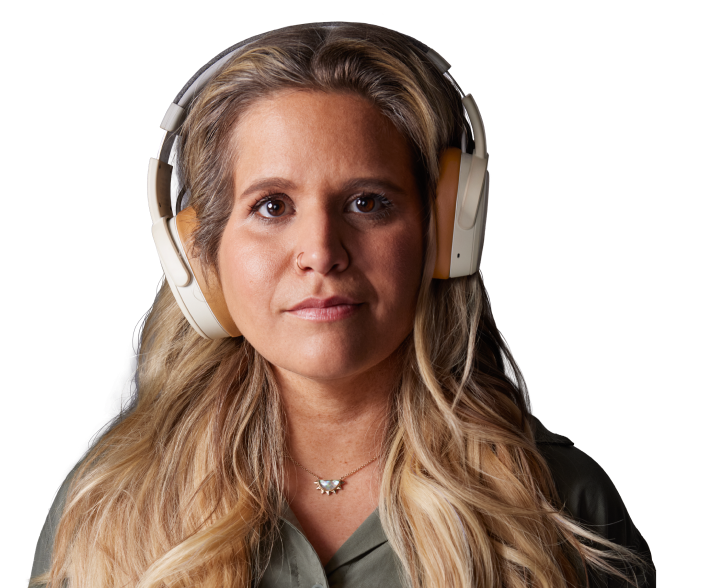This site is intended for US audiences only


– Vanessa,
living with NF1-PN
Coping isn’t care.
All images and quotes are from real people living with NF1-PN, but every patient’s experience is different.
Meet Antwan
He’s been living with NF1-PN for decades. Hear him talk about life with the condition.
My name is Antwan. I’m 38 years old from Kansas City, Missouri.
From what I know, I was two years old when I was diagnosed with NF1. I didn’t realize what NF was really until I became an adult when it really started to give me some challenges.
In 2010, when stuff really hit the fan, it was like, all right, something’s really wrong. Like, I can barely breathe. Like, now I’m like, barely had any energy, and like, I was like, literally on my deathbed.
One doctor encouraged my mom to have me transferred. Another doctor took over and said, hey, we know exactly what to do. And that’s when they realized that a tumor was like, pushing against my lung. So it didn’t leave a lot of room for my lungs to expand, so I wasn’t producing enough oxygen.
But, hey, as long as I can still move around, I’m happy. Like, I don’t get around as easy as the average person, but to me, like, I don’t know what average is because I lived with this my whole life.
I always like to tell people I’m like the sickest healthiest-person you’ll ever meet.
So I’ve had 18 surgeries. I’ve been in the hospital over 25 times, but yet, I’ve traveled. Like, I’ve graduated with a master’s.
No matter what you go through in life, if you have that right attitude, you can, you can really do anything you want.
Want more stories? Stay connected to hear from other people living with NF1-PN. Sign up now.
What is NF1-PN?1-4


Coping with symptoms isn't the answer
Tips to help you stay on top of your NF1-PN
Finding a doctor
Having the support of a medical professional who is familiar with NF1 is an important part of managing your condition.
Speaking up
Talk to your healthcare provider (HCP) about any new or worsening symptoms you may be experiencing, including pain, difficulty moving around, and visible changes to your tumor(s). They won’t know what you are going through if you don’t tell them! The NF1-PN Discussion Guide can help you prepare for your appointments.
Becoming your own champion
No one knows you better than you do. Taking an active role in your health and standing up for what you want can help you get the care you need.
Staying vigilant
Getting connected
Remember, you’ve got this!
The impact of NF1-PN
From physical pain to how you socialize, NF1-PN can affect you in many ways.
- Ejerskov C, Farholt S, Nielsen FSK, et al. Clinical characteristics and management of children and adults with neurofibromatosis type 1 and plexiform neurofibromas in Denmark: a nationwide study. Oncol Ther. 2023;11(1):97-110.
- New and improved: the way to talk about NF. Press release. Children’s Tumor Foundation. May 9, 2023. Accessed February 2, 2024. https://www.ctf.org/news/new-and-improved-the-way-to-talk-about-nf/
- Lee T-SJ, Chopra M, Kim RH, Parkin PC, Barnett-Tapia C. Incidence and prevalence of neurofibromatosis type 1 and 2: a systematic review and meta-analysis. Orphanet J Rare Dis. 2023;18(1):292.
- Darrigo LG Jr, Ferraz VEF, Cormedi MCV, et al. Epidemiological profile and clinical characteristics of 491 Brazilian patients with neurofibromatosis type 1. Brain Behav. 2022;12(6):e2599.
- Stewart DR, Korf BR, Nathanson KL, Stevenson DA, Yohay K. Care of adults with neurofibromatosis type 1: a clinical practice resource of the American College of Medical Genetics and Genomics (ACMG). Genet Med. 2018;20(7):671-682.
- Ferner RE, Huson SM, Thomas N, et al. Guidelines for the diagnosis and management of individuals with neurofibromatosis 1. J Med Genet. 2007;44(2):81-88.
- Fisher MJ, Blakeley JO, Weiss BD, et al. Management of neurofibromatosis type 1-associated plexiform neurofibromas. Neuro Oncol. 2022;24(11):1827-1844.
- Fournier H, Calcagni N, Morice-Picard F, Quintard B. Psychosocial implications of rare genetic skin diseases affecting appearance on daily life experiences, emotional state, self-perception and quality of life in adults: a systematic review. Orphanet J Rare Dis. 2023;18(1):39.